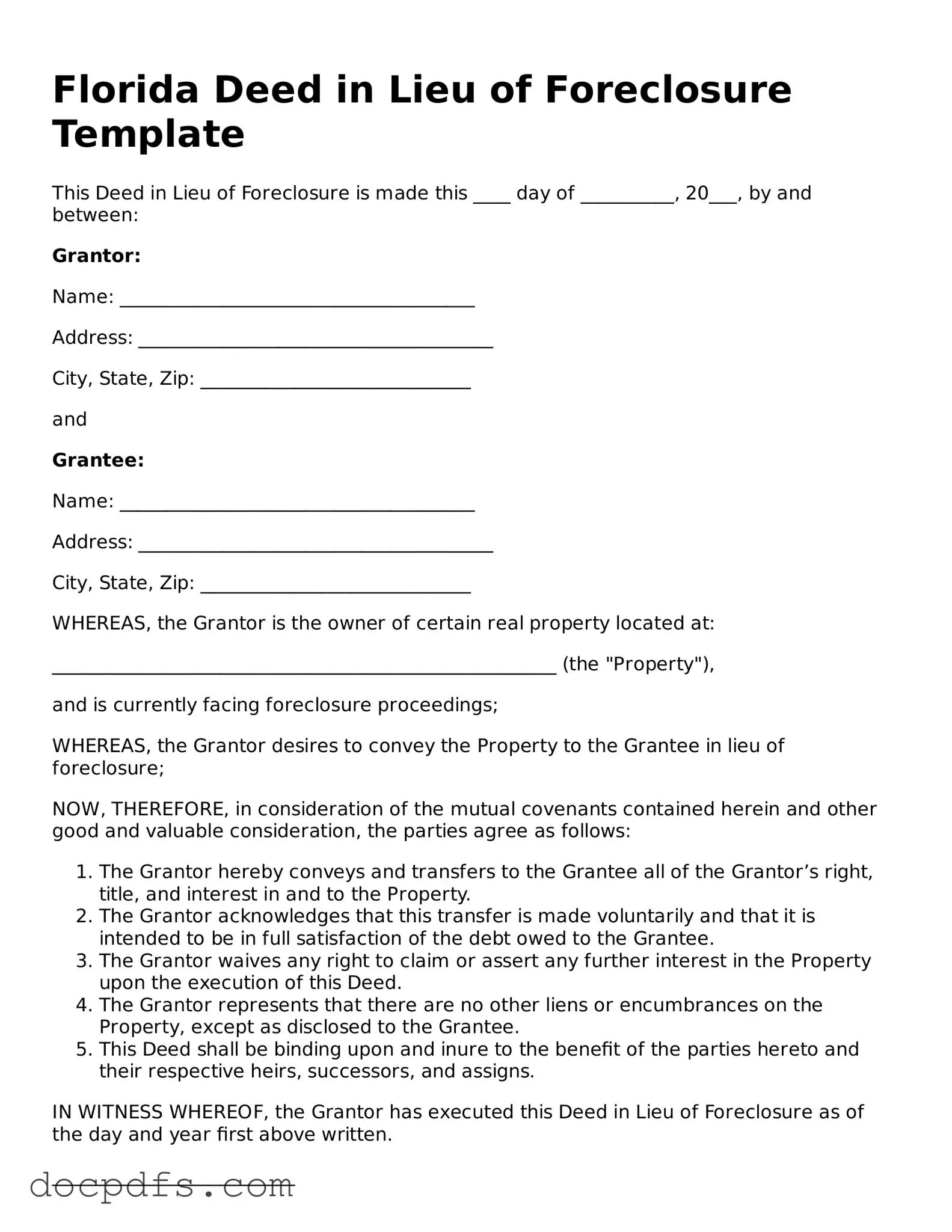In the realm of real estate and mortgage lending, the Florida Deed in Lieu of Foreclosure form serves as a crucial tool for homeowners facing financial difficulties. This legal document allows a borrower to voluntarily transfer ownership of their property back to the lender, effectively avoiding the lengthy and often stressful foreclosure process. By executing this form, homeowners can mitigate the negative impacts on their credit scores and potentially save on additional costs associated with foreclosure proceedings. It also offers lenders a more streamlined method of reclaiming property, which can be beneficial in reducing their own losses. Key elements of the form include the identification of both parties, a clear description of the property, and any outstanding mortgage obligations. Additionally, it often outlines the conditions under which the transfer occurs, ensuring that both the borrower and lender have a mutual understanding of their rights and responsibilities. Understanding this process can empower homeowners to make informed decisions during challenging financial times.
